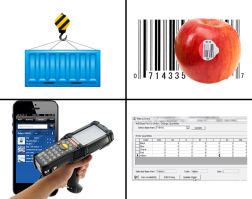Business owners are constantly striving to improve inventory management in their warehouses – but how can they do this? The answer is of course dependent on the company as well as specific problems, but in general, businesses trying to solve inventory problems will typically choose one of 3 approaches; hire additional staff, invest in a proper inventory management system or evaluate and change internal processes. Each option has its pros and cons, however eventually any growing business will reach a point where the only way to improve inventory management is to invest in a proper, robust inventory management system. To get the most out of such a system, consider investing in software with the following functionality:
Landed Cost Tracking
Landed cost is the total cost of an inventoried product, and takes into account expenses incurred to purchase, transport, and import goods from one place to another, within a country or across continents. This includes border fees, duties, taxes, transport costs, insurance, trans-loading and port handling fees among others. Proper landed cost tracking software will automatically account for and reconcile these costs in order to arrive at the true cost of the purchased item. This in turn will allow a business to protect margins and make better purchasing and pricing decisions.
Lot Tracking
Lot tracking (or batch tracking) allows a product to be traced along the entire supply chain from the manufacturer through supplier to the end customer. A lot or batch number can be assigned (manually or automatically) to one or many units of product that are produced or purchased on the same or different dates, and that, possibly have an expiry and/or production date. Lot tracking results in the timely and efficient collection of only the affected product in the event of a recall, thus reducing costs and helping to manage relationships with customers and other members of the supply chain. Lot tracking ensures proper lot costing, minimizes the damage of a recall and is a core component for achieving FDA/ISO/CFIA compliance. And a good lot tracking system can avoid product obsolescence based on expiry dates.
Wireless Barcode Scanning
Wireless barcode scanning can greatly improve inventory management and accuracy in the warehouse when receiving, picking, packing and shipping products. With scanning technology, warehouse staff can scan items at the receiving area to immediately identify and record product information on arrival, pick and pack product based on bin and shelf location and quickly look up inventory information. Vendors who offer mobile scanning solutions for a variety of devices and platforms (such as iOS) provide the benefit of user-friendly interfaces and inexpensive hardware.
Product Matrix
Although originally developed for the apparel industry, inventory software with a product matrix (apparel matrix) may be useful in any industry with a base product that varies in one or more elements (such as style by color and size). A product matrix streamlines and automates the management of products and orders, allowing a business to enter information the way in which it is given. Features may include a product generation wizard, order entry matrix and purchasing grid.
Better inventory management includes properly tracking and recording product costs, efficient receiving, picking, packing and shipping of product, easy data entry without the need for double entry, and compliance with regulatory standards. Although it is possible to do this manually when dealing with only a few inventory items and a small order volume, automated inventory software is the answer for growing businesses.










